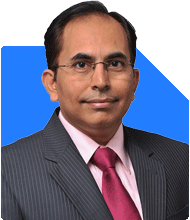am 27 years old i have LIC's Jeevan Umang Plan (945) With Commencement Date:-28/07/2022 With Instalment Premium: 66386.00 Per Year . For 20 Years. If I Surrender my LIC Policy than What amount of surrender value money it is worth it to surrender my ongoing policy
Ans: You have made a proactive step by reviewing your existing insurance-cum-investment plan. That reflects responsibility and financial awareness at an early stage of your life. Many investors delay such evaluations. But you’ve started early, and that is always rewarding in the long term.
Now, let us analyse your LIC Jeevan Umang (Plan 945) from a 360-degree lens.
» Understanding Your LIC Policy’s Nature
– This is a non-linked, with-profits, whole-life insurance plan.
– It offers life cover for the entire life and survival benefits after the premium-paying term.
– After 20 years of paying premiums, you will start getting yearly income for life.
– Also, on death or maturity (after age 100), your nominee or you will get lump sum money.
» What You’ve Paid So Far
– Commencement was on 28/07/2022.
– You have likely paid 2 full premiums of Rs 66,386 each.
– You may have paid the third instalment recently or it is due soon.
– Total payment so far is roughly Rs 1.32 lakh to Rs 2 lakh, depending on instalments completed.
» Surrender Value at This Stage
– LIC policies like Jeevan Umang build surrender value slowly in the initial years.
– No surrender value is available in the first 2 policy years.
– After 2 years, Guaranteed Surrender Value (GSV) is offered.
– In your case, since the policy just completed 2 years, GSV would be applicable.
– The surrender value is typically around 30% of total premiums paid (excluding GST, rider premium).
– In your case, expected surrender value can be Rs 35,000 to Rs 45,000.
– The amount is low because of LIC’s long-term structure and heavy allocation to initial charges.
» Should You Surrender the Policy Now?
– Surrendering early gives very low value.
– But continuing may lock your money in a sub-optimal product for 20 years.
– Let us explore this from multiple angles before deciding.
» Returns Expectation from LIC Jeevan Umang
– Internal Rate of Return (IRR) in Jeevan Umang is usually between 4% and 5%.
– This return is over the long term (20+ years) and includes bonuses.
– Bonuses are not guaranteed. They depend on LIC's future profits.
– Even in best-case scenarios, returns don’t beat inflation.
– For a young person like you, a 4% return does not create wealth.
– Mutual funds or other investment-focused tools offer better compounding potential.
» Drawbacks of Continuing Jeevan Umang
– Low liquidity: You cannot access your money for 20 years.
– Low returns: Earnings won’t outpace inflation or meet future goals.
– Opportunity cost: Better growth assets are available, especially at your age.
– Locked-in commitment: You must pay Rs 66,386 yearly for 20 years. That’s Rs 13+ lakh over time.
– If you miss premiums in between, policy may lapse or benefits reduce.
– Risk cover is also modest, compared to standalone term plans.
» Do You Need Life Insurance Right Now?
– At 27, you may or may not have major dependents.
– If unmarried and no major financial liabilities, insurance may not be urgent.
– When needed, pure term insurance gives high cover at low cost.
– For example, Rs 1 crore term cover may cost Rs 8,000–10,000 yearly.
– Compare that to Rs 66,386 for limited life cover in Jeevan Umang.
» What If You Invest the Same Amount Elsewhere?
– If you invest Rs 66,386 every year in a diversified mutual fund, returns can be far superior.
– Over 20 years, assuming conservative 10% return, the corpus may reach Rs 38–40 lakh.
– That’s significantly more than what Jeevan Umang can deliver.
– Mutual funds are flexible and liquid. You can pause, increase or redeem as needed.
– You stay in control of your money.
» Actively Managed Mutual Funds vs LIC
– Mutual funds are meant purely for wealth creation.
– LIC plans mix investment and insurance, which dilutes both.
– You get transparency, flexibility, and higher return expectation in mutual funds.
– Active fund managers dynamically rebalance based on market conditions.
– This agility is absent in traditional insurance plans.
» Why You Should Avoid Direct Mutual Funds
– Direct plans may seem cheaper due to lower expense ratio.
– But without expert guidance, wrong choices can ruin returns.
– Lack of goal alignment, poor rebalancing, or overexposure are common risks.
– A Certified Financial Planner (CFP) partnered MFD can help guide your journey.
– Regular plan investors get personal advisory support at no extra effort.
– This ensures correct fund choice, periodic reviews, and disciplined investing.
» What To Do After Surrendering Jeevan Umang
– Surrender the policy to avoid locking funds in a low-yield plan.
– The surrender amount may be small, but the future savings can be large.
– Use future Rs 66,386 annual amount in a diversified mutual fund SIP.
– Create a target-based portfolio based on your long-term goals.
– Get a pure term plan if insurance is needed. Keep it separate from investments.
– Build emergency fund for liquidity.
– Keep health insurance in place for protection.
– Align all financial moves to future goals, not just product features.
» Handling Emotional Attachment with LIC
– Many investors hesitate to exit LIC due to legacy, family belief, or peer advice.
– But financial decisions must serve your goals, not legacy systems.
– Being loyal to LIC doesn’t mean staying in unsuitable products.
– A professional and independent outlook is better than emotional dependency.
» Final Insights
– You’ve started financial introspection early, and that’s commendable.
– Your LIC Jeevan Umang is better suited for those needing low-risk, long-term assurance.
– It does not match the return expectations or flexibility needs of a young earner.
– Surrendering now, though slightly loss-making, frees you for better options.
– That gives you long-term control, agility, and compounding advantage.
– You can rebuild faster with the right mutual fund SIP strategy.
– Keep protection and investment separate always.
– Choose regular plans and consult a qualified CFP for best results.
– Focus on goal-based investments, not product-oriented approaches.
– This step today will make a huge difference to your financial future.
Best Regards,
K. Ramalingam, MBA, CFP,
Chief Financial Planner,
www.holisticinvestment.in
https://www.youtube.com/@HolisticInvestment






























